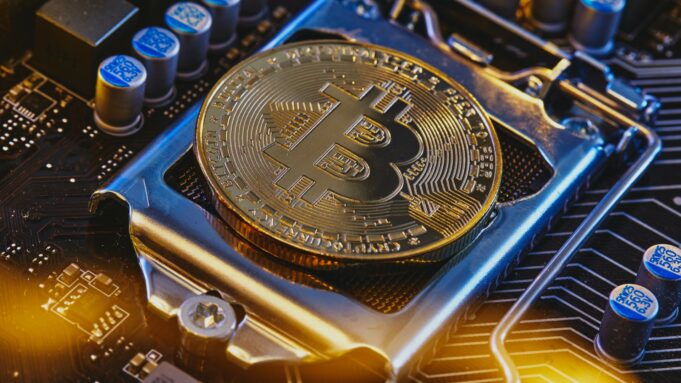Bitcoin mining is the process of adding new transactions to the blockchain and verifying them through complex mathematical equations. As more people join the network, the difficulty of mining Bitcoin increases. The difficulty level regulates the rate at which new blocks are added to the blockchain, and it is adjusted every 2016 blocks, or roughly every two weeks. But who controls Bitcoin mining difficulty? This article will explore the factors that influence mining difficulty and who has a say in setting it.
Bitcoin mining difficulty is determined by a consensus algorithm called the difficulty adjustment algorithm (DAA). The DAA is designed to ensure that new blocks are added to the blockchain at a constant rate, regardless of the number of miners on the network. The DAA uses a target threshold, which is the number of leading zeros required in a block’s hash to be considered valid. The DAA adjusts the target threshold every 2016 blocks to maintain a constant block time of 10 minutes.
The adjustment of the target threshold is based on the total hash rate of the network. The hash rate is the amount of computational power that miners contribute to the network. The higher the hash rate, the more difficult it is to mine Bitcoin. The reason for this is that the target threshold is lowered, meaning that more leading zeros are required in a block’s hash to be considered valid. This increases the difficulty of finding a valid block hash and earning the associated Bitcoin rewards.
So who has a say in setting the difficulty level? The short answer is that no single entity controls Bitcoin mining difficulty. Instead, it is a decentralized process that is influenced by various factors. One of the primary factors that influence mining difficulty is the hash rate of the network. As more miners join the network and contribute their computational power, the hash rate increases, and the difficulty level adjusts accordingly.
Another factor that influences mining difficulty is the price of Bitcoin. When the price of Bitcoin is high, more miners are incentivized to join the network, which increases the hash rate and subsequently increases the difficulty level. Conversely, when the price of Bitcoin is low, some miners may choose to exit the network, which can lower the hash rate and decrease the difficulty level.
The DAA is also designed to prevent sudden changes in mining difficulty. It does this by adjusting the target threshold gradually over a period of time instead of making abrupt changes. This helps to maintain a stable network and prevent wild fluctuations in mining difficulty.
It is worth noting that some mining pools have a significant influence on the hash rate of the network. A mining pool is a group of miners who combine their computational power to mine Bitcoin together. By pooling their resources, they can increase their chances of earning Bitcoin rewards. Some of the largest mining pools, such as Antpool and F2Pool, have a significant influence on the hash rate of the network. However, they do not have direct control over the difficulty level.
In summary, Bitcoin mining difficulty is a decentralized process that is influenced by various factors, including the hash rate of the network, the price of Bitcoin, and the DAA. No single entity controls the difficulty level, and it is adjusted every 2016 blocks to maintain a constant block time of 10 minutes. While some mining pools have a significant influence on the hash rate of the network, they do not have direct control over the difficulty level. Overall, the decentralized nature of Bitcoin mining difficulty ensures that it remains fair and equitable for all participants in the network.

























